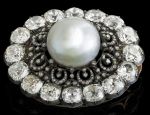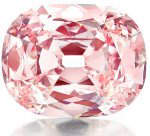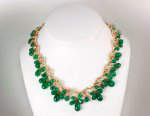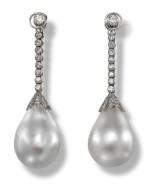Our Old Diamonds, Gemstones, Minerals and Jewelry Blog
Open FREE Unlimited Store Join Our Newsletter
Read Other Users Blogs/ Create Your Own Blog and Our Own Social Network
Scroll down for Gemstone Blog

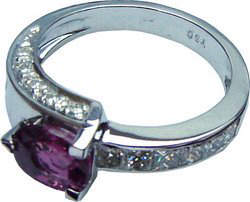

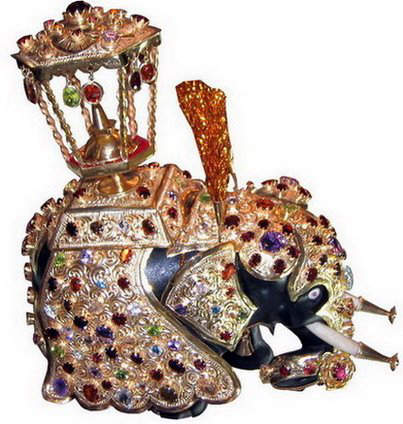
Jewel (Ceylon Sapphire) Studded Ornamental Elephant
Click to Enlarge
Click Here For Our Full Jewelry Blog

Ceylon Blue Sapphires and a ring made up of a Ceylon Blue Sapphire and Diamonds set in 18k white gold.
Island of gemstones through the ages.
An increasing global awareness of the economic potential of gemstones has created an unprecedented demand for them. It has led to an accelerated production drive and an intensified search for them in gem producing countries.
Sri Lanka ranks with Myanmar, Brazil, South Africa and Thailand as one of the world’s most important gem bearing nations. The story of Sri Lanka’s gems is as old as civilization itself. Legends, myths and the occult have been associated with the long history of the island’s precious stones. Gems are deeply embedded in the traditional beliefs and the religious life of the majority of Sri Lankans. Priceless gems are among the treasures kept in the relic chambers of the great Buddhist stupas in the island.
The earth’s greatest concentration of gems in over 50 varieties is found within the country’s land area of approximately 25,000 square miles.
The Gemstone and Jewelry Industry in Sri Lanka.
The history of the gems of Sri Lanka can be traced back some 3,000 years or so. They are part of many legends, folk lore and literary works. Sri Lanka’s gems are much written about by early travellers from Europe, Arabia and Asia. They have adorned many a Crown, Sceptre and Throne. These gems are the prized possessions of royalty and the rich and famous through the ages right up to this day.
Out of about 200 minerals that are classified as gemstones, around 75 varieties are found in Sri Lanka, making this small island one of the most important geographic locations in the world of gemstones
Ancient technology utilized to manufacture Sri Lankan Gemstone beads and carvings.
Gems have been defined as “objects of great beauty or worth†and as “precious stonesâ€, specially, when those are cut and polished for ornamental use. Over the centuries, however, the term ‘gemstone’ had meant a naturally occurring Mineral desirable for its beauty, valuable in its rarity and sufficiently durable to give lasting pleasure.
From the time immemorial, Sri Lanka had an immense reputation for many varieties of gems. Legend has it that King Solomon wooed Queen of Sheba offering precious stones of Sri Lanka. Many years later, Prince Charles mesmerized Lady Diana with an engagement ring adorned with a priceless blue sapphire from Sri Lanka.
Like what you are reading?
Please Link to us
Establishment of a Gemmological Testing Laboratory
One day early last centaury gem and jewelry traders were elated!. A method to produce gems had just been discovered by French scientist August Verneuil. Just mix up ingredients needed to produce corundum and run through a flame produced by LP/O2 gas mixture… powders melt and forms gems in a matter of minutes!. They called it ‘Flame fusion processes’. Ruby and sapphire thus produced were so real, so free of inclusions, yet costing only a few hundredth of a natural of the same color and quality. People thought ‘Oh, why do we need a natural when all the physical properties and optical properties are the same in these new synthetic rubies and sapphires’. Natural gem trade collapsed within a short period. But some talked about the importance of the naturalness of a gem. They said ‘we don’t want man made things to replace our natural beauties’. Gemologists had to intervene to identify these products. They found curved growth lines and tiny gas bubbles, the types which do not exist in natural gems. This resulted in the natural gem trade slowly recovering. But it took years!!.
Gem trade in Sri Lanka during the British period
Despite Sri Lanka's legendary fame for its precious stones, none of the colonial powers showed any interest in developing that industry. John Davy observed that" like mining in general the occupation of searching for gems is a very precarious one" and therefore not "a profitable pursuit"To the Colebrook Commissioners," the gems of Ceylon...(were) the least important of its mineral productions."Even Tennent found that only "persons of worst-regulated habits......(were) continuously engaged in this exciting and precarious trade." He also noticed that because of the gem industry" serious demoralization is engendered by the idle and
Pearl industry during the British period in Sri Lanka
The Moors of Sri Lanka were involved in the business of pearl fishery and pearl exports during this period. Even though this industry was a government monopoly until 1833,the manner in which it was operated provided ample opportunities for the Moors to engage in the enterprise in various capacities. The Government usually rented the fishing rights to speculators on condition that they fish within a predetermined area, for a specified number of days and with a stipulated number of boats. Even after 1833 this system remained largely intact with the difference that instead of renting the right to fish, the government now hired the divers to work for it under official supervision and sold the oysters to pearl merchants through public auction.
Gem buying tips
1.Important factors that determine the price of a gemstone are:-
(i) The type of gemstone.
(ii) The size of the gemstone.
(iii) The type of cut employed.
(iv) The color of the stone-whether the color is light or dark; Whether the color is even and dispersed throughout the stone.
(v) Whether the stone is natural or synthetic. Natural stones are generally more valuable than their synthetic counterparts.
(vi) Whether the stone has been subjected to any form of treatment, such as heat treatment, irradiation, diffusion, dying etc. The demand for natural untreated stones is on the rise worldwide.
A prospective buyer should carefully look into all the above aspects when deciding to purchase a gemstone.
Birthstones
The origin of Modern Birthstones is deeply rooted in the Judaeo-Christian beliefs. The Breastplate of the High Priest of Exodous of the Old Testament became the basis of the present day Birthstones. It is known as the "Breast plate of Aaron" .The Jews believed that communication with Elohim [God] became easier when one puts on the same gems as the Breastplate. The Western Birthstone system is derived from the 1st century AD writings of Josephus and 5th century AD writings of St.Jerome, both of whom trace its origin to the Breastplate of the Hebrew High Priest.
Wholesale Gemstones and Gemstone Jewelry
We also deal in the Wholesale Gem stone and Wholesale Jewelry trade. Prospective wholesale buyers are requested to contact us directly for their requirements.
We have large stocks of processed precious and semi-precious stones of all varieties, and brilliantly crafted jewelry of different designs to suit the requirements of all buyers. Please let us know of your requirements and we will endeavor to meet all your needs at the most competitive prices.
Geological history of Sri Lanka
The age of the earth is about 4 billion years according to modern geologists and astronomers. Much information about the earth has been recovered from the geological records enshrined in the ancient rocks and stratified formations laid down in successive ages as mud, sand, gravel, and shells in the beds of oceans, lakes, and rivers. During the greater part of this incalculably long period of the Earth's History, that small portion of the earth' land surface constituting the Island of Sri Lanka, at the tip of the Indian Sub-Continent, did not form a separate geographical entity.
Towards the end of the Paleozoic Era, when plant and animal life had undergone a long period of Evolution, the land now comprising Sri Lanka formed part of a vast Southern Continent, to which the name Gondwanaland has been given, and which
Nov 05, 2016
The Putilov Pearl Brooch
The Putilov Pearl Brooch gets its name from Alexey Ivanovich Putilov, the Russian financier, banker, entrepreneur and industrialist or borrowing a term from the Marxist Philosophy
Oct 21, 2016
Oppenheimer Blue Diamond
Oppenheimer Blue Diamond world's most expensive jewel sold at an auction
Apr 01, 2015
The Princie Diamond-34.65-carat, cushion-cut, fancy intense pink Golconda diamond
The 300-year-old diamond sold by the last Nizam of Hyderabad at Sotheby's London in 1960 was purchased by Van Cleef & Arpels and christened the "Princie Diamond" in honor of the 14-year-old son of Maharani Sita Devi of Baroda, who were the guests-of-honor at a party held to celebrate the acquiring of the diamond by Van Cleef & Arpels
Continue reading "The Princie Diamond-34.65-carat, cushion-cut, fancy intense pink Golconda diamond"
Jan 19, 2015
Julius Cohen Necklace - Bequest of Margaret McCormack Sokol
Necklace designed by New York based Julius Cohen Jeweler Inc. for one of their discerning and culturally sophisticated customers, Mrs Margaret McCormack Sokol, wife of Dr. Herman Sokol, renowned chemist involved in the U.S. Government's synthetic rubber program during World War II; one of the pioneers of the American antibiotic production program; Co-discoverer of the antibiotic tetracycline who also developed the basic processes for the manufacture of tetracycline
Continue reading "Julius Cohen Necklace - Bequest of Margaret McCormack Sokol"
Jan 01, 2015
Hazen Diamond Necklace - from the National Gem Collection of the Smithsonian Institution
A Statement Necklace of elaborate and intricate design by Harry Winston Inc. made up of diamonds and platinum only, but incorporating 325 diamonds of different cutting styles such as pear, baguette, round-brilliant and emerald cuts in four rows, yet versatile being able to be worn as a single-row diamond necklace or as an elaborate 4-row dramatic fringe necklace, gifted by Lita Annenberg Hazen to Smithsonian's NMNH in 1979.
Dec 28, 2014
Hall Sapphire and Diamond Necklace - Jewels from the National Gem&Jewelry Collection
A blue sapphire and diamond necklace designed by Harry Winston Inc. featuring 36 cushion-cut Ceylon/Sri Lanka blue sapphires, accented by 435 colorless diamonds, gifted by Evelyn Annenberg Jaffe Hall to the NMNH of the Smithsonian Institution in 1979
Dec 24, 2014
Hooker Starburst-Cut Yellow Diamond Jewelry Suite
Gifted by the Late Mrs. Janet Annenberg Hooker to the Smithsonian's NMNH in 1994, consiting of a rivière necklace set with 50 starburst-cut fancy yellow diamonds, a matching pair of earclips and a yellow-gold ring also set with starburst-cut yellow diamonds
Continue reading "Hooker Starburst-Cut Yellow Diamond Jewelry Suite"
Dec 22, 2014
Elena Lupescu's Natural Pearl and Diamond Drop Earrings
The drop earrings designed in the Belle Epoque period was purchased by Carol II during his temporary exile in Europe between 1925 and 1930 and presented to his mistress Elena Lupescu as a token of his love and affection for her
Continue reading "Elena Lupescu's Natural Pearl and Diamond Drop Earrings"
Powered by Ultra Secure
Amazon (USA) Cloud Network

Founder Internet Stones.COM
Register in our Forums
| Featured In
|
|
|
|
|
|
|
|









